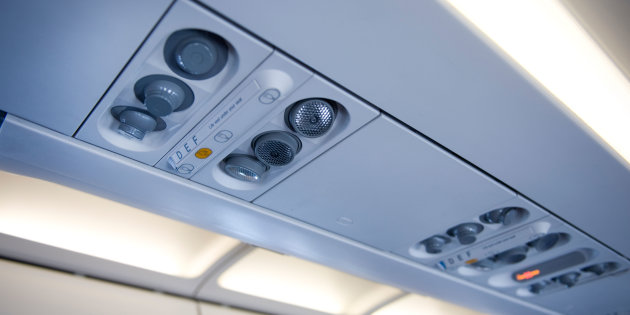
CT2J22 airplane overhead console with air conditioning and lighting system
The air-conditioning vent placed above the passenger seat on the plane does not have an excellent reputation: some close it due to low temperatures, those who believe that they circulate the bacteria present in the cabin and therefore favor contagion of diseases. According to Dr. Mark Gendreau, deputy director of the emergency medicine department at Lahey Medical Center-Peabody and an expert in infectious diseases caused by air travel, the air conditioning outlet plays, on the contrary, to our advantage. At “Travel + Leisure” he explained why we should not be afraid of it .
“The bad reputation of these outlets is completely unfounded,” he said. The fear, according to what reported by the specialist, is given by the lack of proper information on the subject, since there is no research in the last 15 years. Many people therefore ignore its operation.
“The flow of air does not necessarily flow from the end to the start of the plane and vice versa.The conduit is made up of compartments that are found in various sections of the aircraft,” he added. The air circulating inside the cabin is combined with the air outside: the flow passes through a system called HEPA (High Efficiency Particulate Air) , which has the task of removing powders and microbes. The air that is fed into the cabin is therefore clean.
According to what reported by Gendreau, the number of these ventilation zones on the aircraft varies depending on the size of the vehicle, but each of these areas is usually filtered from 15 to 30 times per hour, with 50 for 100 percent of the air cleaned up and recirculated and 50 percent of the air coming from the outside.
The doctor then revealed another curiosity: the system was developed when smoking on aircraft was allowed. At the time, the airlines had to have an efficient filtering and ventilation system to clean the cabins from smoke.
The ventilation, moreover, would contribute, contrary to what is believed, to keep bacteria away: by opening the air vent and setting it to a medium or low power, it is as if we create an invisible barrier around us that can hinder the passage of microbes. The air intake is, therefore, an ally, not an enemy to ward off.
